| 1 | Australia’s longest venomous snake |
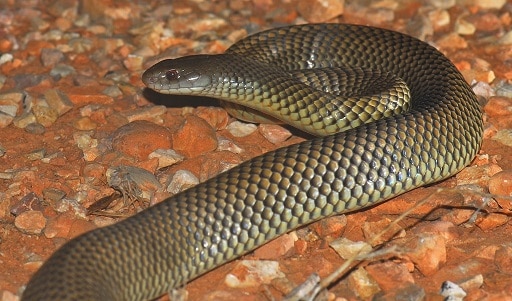
The inland taipan has the most toxic venom, and the eastern brown snake kills the most people per decade. However, it’s actually the mulga, AKA Pseudechis australis, which is the longest venomous snake to patrol the parched landscape of Australia.
Mulgas are also known as king brown snakes, but aren’t actually a member of the brown snake family. Instead, they’re a black snake representative, belonging to the same Pseudechis genus as the red-bellied black snake. Mulga snakes are distributed over 80% of Australia, from the orange gold mining hub of Pilbara in the west to the civilised outskirts of Cairns in central Queensland. Unlike the eastern brown snake, they don’t appear in east coast cities such as Sydney and Canberra, yet they cover a larger area of Australia overall.
In the north, mulgas are much paler, with non-flashy patterns and small scales arranged in the shape of honeycombs. The further south you travel, the darker they become, while still looking fairly mundane.
The mulga’s main selling point is its brute length, which averages at 2 metres and reached 3.3 metres in the longest individual ever recorded (found in Darwin). Mulgas are a relatively thick snake as well. One useful ID feature is their eyes: their irises are a clay red colour, surrounding round black pupils.
| 2 | Gargantuan venom totals |
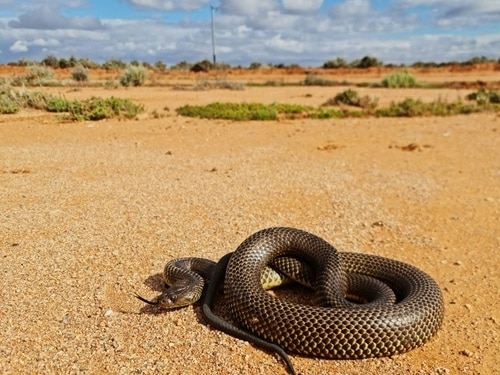
The LD50 rating of mulga snake venom is unexceptional, at 1.91mg versus 0.025mg for the dreaded inland taipan. It’s in the venom quantities where the mulga snake sends shivers down people’s spines. A typical snake will produce 150mg, but larger ones can inject a globule of venom totalling 780mg, 920mg or even 1350mg. These totals are similar to the king cobra or gaboon viper. The most worrying fact is that barely any venom is left on the skin, just 0.1% according to a study on mice.
The all time record was set by a 12 year old, 2.5 metre mulga snake named Chewie, in an experiment from April 2016. Two handlers gripped his head and simply prompted him to release the venom using their hands, and their reward was a 1500mg flood.
A mulga snake produces so much venom that it’s capable of taking down a horse, as reported by a reddit user from the heart of the Australian bush. The horse took just 15 minutes to die. The discussion then become an argument, as the user insisted that the snake made a cold and calculated decision to target the horse after spotting them coming. A second user insisted that this was a ridiculous protection of anthromorphic characteristics onto a mindless reptile.
| 3 | Deaths are surprisingly rare |
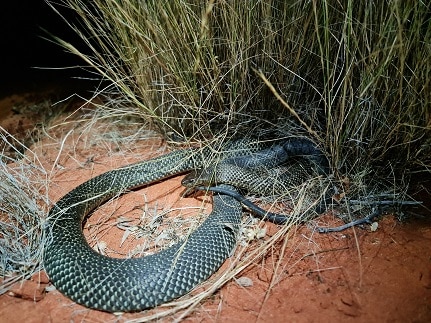
From 2005 to 2015, the mulga snake caused 31 bites nationwide, the 5th highest for any Australian species. The top 4 were the eastern brown snake (296), tiger snake (119), red-bellied black snake (117), and rough-scaled snake (64). However the mulga snake managed no deaths, despite its generous splashing of venom. The last fatality dates all the way back to 1969, in the wheat farming town of Three Springs 200 miles from Perth.
A 20 year old labourer was reaching under his verandah for cigarettes, when he was bitten 2 times on the arm. He reached hospital in a nauseous state, and 37 hours post bite, his mind-muscle connection was severely weakened. He couldn’t open his eyelids further than 1cm, he could barely protrude his tongue, and his limbs could only push back against the slightest pressure. The doctors gave him eastern brown snake and tiger snake antivenin, but the man soon succumbed, and an autopsy revealed internal haemorrhaging.
As brutal as it was, this death massively improved the treatment for future victims, as doctors switched to Papuan black snake antivenin as the default remedy, a much closer species on the evolutionary tree.
| 4 | Alice springs – just stay away! |
Being found all over Australia, the mulga snake can bite people all over Australia. Alice Springs seems to be a particular nightmare zone. The town is the 3rd largest in Australia’s Northern Territory and was built to service the booming cattle industry and its workers. Today, it’s a modern town with supermarkets, dentists and the lot, yet surrounded on each side by harsh Australian bush.
2021 saw the case of a 10 year old girl, who was bitten twice on the foot by a mulga snake as she slept in her bed. She survived after 12 hours in the ICU, hanging onto life by the skin of her teeth, as the huge quantities of venom circulated through her proportionally smaller body, but survived with no lasting injuries. The girl was screaming in terror just after the bite, but then became amazingly calm, and suffered no mental trauma.
Another Alice Springs horror occurred when Tyrone Pahh was wheeling his bike into a garage, after a hard cycle session late in the evening. A mulga snake lurking by the door also had plans, and leapt for the man’s leg, opening wide for a vicious bite. Fortunately, Pahh moved forward just in time, so that the snake’s fangs landed in the black rubber of his tyre instead. Alice Springs – it’s the place to live if you like mulga snakes.
| 5 | A classic urban “legend” |
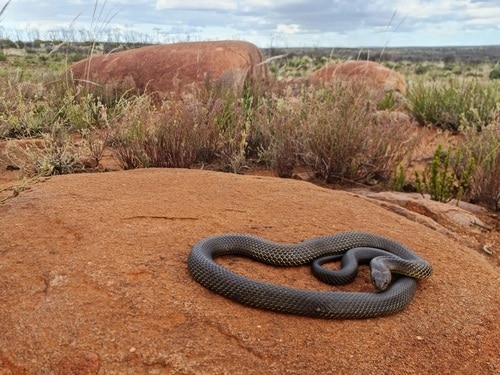
A famous recent case involved a depressed divorcee, aged 55, who thrust his arms into a bag containing a mulga snake, in a rash attempt to end it all. He was bitten 9-12 times, and managed to survive, albeit with an amputated arm. According to Lyons: “I’d always loved snakes and decided it was a good way to go”. But he added that “I’m all right now and wouldn’t do it again.”.
The strange tale was first reported on Northern Territory News in 1998, and became a classic urban myth in Australia, which people chuckled at but didn’t truly believe. That changed in 2009 when the now one-armed Lyons was tracked down to Tennant Creek, where he worked as a caretaker, and persuaded to give an interview.
Lyons’ heart stopped 3 times during the operation to amputate his arm. He was kept alive by a ventilator and dialysis machine, lying in a hospital bed for 2 months. On the way to the hospital, his friend poured a cold can of beer over his head to keep awake. When he finally returned home, Lyons was as weak as a 5 year old girl, and spent the next 3 years “in a haze”.
| 6 | Sneaks through bedroom windows |
Anther terrifying fact is that mulga snakes are the most likely Australian snake to invade people’s bedrooms. The likes of eastern browns, tiger snakes and death adders don’t bother, but mulgas regularly appear beneath people’s bedsheets at midnight, including after people unconsciously roll on top of them.
A study from 2014 examined 27 mulga snake bite cases from recent decades. 17 involved improper handling or curiosity, but 10 were “accidental”. Of those 10, 7 involved people sleeping soundly at night. All of these occurred from midnight to 5am, and all in rural areas. Four of the victims were sleeping in their beds, two on the ground outside, and 1 in a shearing shed.
Apparently the snakes had a preference for biting on the extremities of limbs. The scientists remarked that Pseudechis australis was the only Australian snake they’d ever spotted invading people’s bedrooms. In this they join the notorious spitting cobras of Africa, particularly the Mozambique spitting cobra.
| 7 | The most thuggish Australian snake |
Some snakes strike silently and smoothly after swaying their head with an inquisitive look of calm on their face (see that notorious spitting dinosaur from Jurassic Park). The mulga snake is vicious and angry from the get go. When spooked, it inflates its neck and begins swaying its head from side to side violently, not in the air, but parallel to ground.
It hisses loudly, and if the encroacher doesn’t leave then the mulga snake will lunge forward in an attempt to bite, not bothering to hide it. Mulga snakes sometimes grip their victims and chew repeatedly, with the only motivation being pure viciousness (unlike the ring-necked snake, which needs to chew).
The bedroom invading study also revealed the typical symptoms of a mulga bite, on the less severe end seeing as none died. Among the 27 victims, the most common were nausea/vomiting (15 people), followed by abdominal pain (13), headache (9), diarrhoea (8), and visual changes (3). Mulga snake venom also acts quickly. Doctors recommend a narrow time slot of 2 hours to inject antivenin, before it’s too late and the venom tears through muscle tissue leaving necrosis in its wake.
| 8 | Duels its fellow kind |
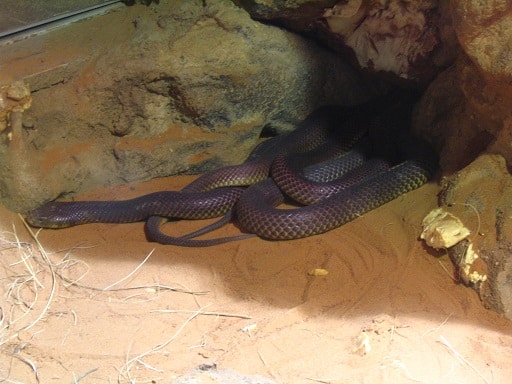
Mulga snakes aren’t just vicious with humans, but with their fellow kind. Male on male wrestling is particularly common, whether it’s fighting over a female or territory. One royal rumble took place in September 2008, in Mornington Wildlife Sanctuary in Western Australia. Scientists took notes as two mulga snakes approached each other at the foot of a thick, green reed bed.
With no warning, the snakes began wrestling, intertwining their bodies with each other like two pieces of tangled spaghetti. The snakes repeatedly raised the upper third of their bodies, trying to get higher in the air than the other, like a weird goalpost that only they understood. They hissed non-stop, and one snake tried to bite the other without landing. After 40 minutes, the “loser” snake left and the first snake climbed the reed bed, possibly revealing what they were fighting over.
But 2 days later, the defeated snake returned, and this time the battle was much more aggressive. At one point they ascended high into the reed bed like two gladiators about to have a climatic showdown, and their coiling, writhing duel later took them to a road 20 metres away. The snakes were hissing louder than ever, and this time, both snakes fled the reed bed afterwards, looking for a more peaceful spot.
| 9 | Diet: unfussy like a great white |
The mulga snake will eat almost anything. No food group is exempt. They’ll eat mammals, birds, skinks, geckos, and frogs alike. They’re particularly notorious, however, for eating other snakes. That includes the most venomous snake on earth: the inland taipan. Its venom can reportedly kill 75 adult men, yet the mulga snake just slithers up to it with no attempt at camouflage and seizes it with its teeth, in the cracked, clayey outback zones where it lives. Mulga snakes are also known to eat…
Brown tree snakes – 1-2 metres long with a mild venom.
Crowned snakes – a mildly venomous swamp dweller, just 25cm long.
Gould’s hooded snake – 30cm long, a forest dweller, with a mild venom.
Mulga snakes – they’re not averse to cannibalism.
Being so greedy and powerful, there must be blowback somewhere, and justice comes in the form of the invasive cane toad. Unlike the common keelback or red-bellied black snake, mulga snakes have no resistance to this ultra toxic amphibian, and will roll over and die after eating one. However, their population numbers haven’t fallen much post-invasion, hinting that they instinctively avoid them anyway.
| 10 | The Kurrmurnnyini sorcery legend |
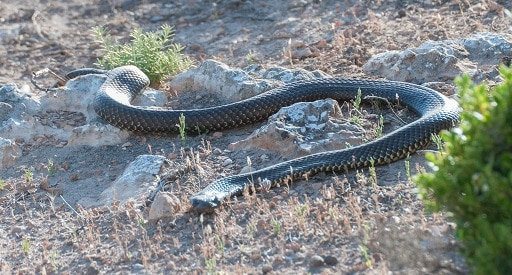
Mulga/king brown snakes are a character in many aboriginal legends, and one classic centres around a rocky lagoon and cave complex called Kurrmurnnyini. The legend begins with a band of noisy Spirit Men Ancestral Beings disturbing a spot 1 mile north of the lagoon, where the ancestral mulga snake was sleeping silently. The terrible snake was enraged, and viciously bit the nearby rocks, infusing them with deadly venom forever.
From that day, the cursed rocks became narnu‐bulabula, or instruments of sorcery. Sorcerers would harness their dark power against intended victims, by placing their clothes over the rocks and chanting spells. Others would paint pictures in the rocky shelter and sing a magical song intended to attack the life force of the intended victim. Sorcerers had to be descended from the original Mulga Snake Ancestor Being, and even those chosen ones had to avoid touching the contaminated rocks, lest they fall victim to the mulga’s ancient poison.
To this day, Kurrmurnnyini remains a toxic place for aboriginals, ever tied to sorcery and death. It’s a spooky place littered with archaeological artefacts, and over 100 paintings on the shelter’s walls, said to be of the victims themselves.
